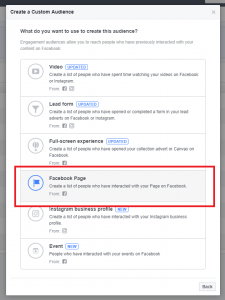Ask your friendly neighborhood head of marketing about her new hires, and she is chock full of enthusiasm. Ask her about her 2016 marketing plan, and she is raring to go. Ask her about her shiny new marketing automation tool, and she is six flavors of hopeful.
What about the launch of the new website, though? How’s that coming along?
What follows are fake smiles, indirect eye contact, and nervous laughter.
So why is it so damn hard to launch a new corporate website? After all, the website was the original piece of digital real estate for companies. Shouldn’t it be getting easier, not harder?
Here’s why reaching the finish line (hell, sometimes just reaching the starting line) remains so painful, and some tips on what you can do about it.
The objectives aren’t clear
Does your CEO care about this week’s blog post? He probably doesn’t even know the difference between a blog post and a press release.
Does he care about what you’re posting on social media about next week’s trade show? Tweets are for the birds, status updates are what he offers his wife when she asks when he’ll be home for dinner, and “What’s on your mind?” is a question he never, ever wants to answer openly and honestly.
But the new website? He wants in. He wants to be a part of the team. He wants final signoff on everything. He may even offer to write the content himself. Why? Because the corporate website remains the single most important digital marketing asset for just about every company.
What, though, are the objectives for the new website? Those should be clearly defined before a single dollar or hour is spent on the project. Mess this up and you’re likely screwed.
So ask this question once, twice, three times — whatever it takes: What do we expect this new website to do for our business? Then stop and listen. And make sure everyone agrees. Document it. Live by it. Remind people of it.
Someone (likely your CEO or head of sales) set a random deadline
Here’s another common no-no. It’s either the ultra-critical board meeting in six weeks, or maybe it’s the big industry trade show in eight, but it’s always something. A new website, of course, is a necessary component for success with either of those events. So just get it done by then, ok, marketing dude?
Don’t do it. Just don’t do it. High-quality websites, unlike the craptastic band-aid variety that many develop, never get done in less than 12 weeks. Sorry, friends. That’s the reality.
Push back on the deadline. Ask if a mediocre website for the board meeting or trade show will suffice. If the answer is yes, perhaps you’re working at the wrong company. Or if you’re ok with that, maybe it is the perfect place for you.
You simply have too many cooks in the kitchen
Come on, people. This is website 101. Really, it’s business 101. Put more than one person in charge of a project, and no one is in charge of a project.
It’s fine — and likely necessary — to give multiple people an opportunity to provide feedback on the design and structure of a website, but you must put in place a SINGLE DECISION MAKER. See that, now I am yelling at you, because this is where the whole thing typically falls apart!
This is easier than it sounds, Ms. SINGLE DECISION MAKER, but when planning your project, the first step is to limit your feedback providers to as few as possible. Then, provide them with a list of deadlines for feedback, and specifically what you will be asking for feedback on. And tell them upfront that the feedback loops will be tight — 48-72 hours in most cases — and that any delay in that feedback will delay the entire project. Then just go ahead and enforce those rules. Even better, get buy-in from those above you to move forward without that feedback if people just don’t follow through. Because they won’t, or they will come back with 32 questions instead of responses. And all of a sudden you’re three weeks behind.
Sounds easy, right?
Design firms are just that — design firms
In the last month alone, I’ve had three or four of these types of conversations.
Client: The website is launching in two weeks.
Me: Really. That’s great! Where are you in the process? QA, right?
Client: Not quite yet. Still finalizing designs. Coding has begun, but not finished. And we’re still working on content.
Me: So who is handling some of the website migration issues, like 301 redirects? And how about simple on-page SEO, who’s got that? I assume keyword research has been completed?
Client: I’ll have to check and get back with you.
Design firms are design firms, and generally speaking, that’s all they are. They’re creatives, not marketers. They will make your website look pretty, and some, if they have the development capability, will even create some cool functionality for you. But that’s all you’re getting.
Here’s my advice: Hire a firm, an individual, or a set of individuals, who can handle everything from strategy, design, and UI, to development, SEO, and content. If you truly know you can handle some of those pieces in house, go for it. But don’t be an idiot about it. Everyone says they can handle their own content… until they can’t. And that’s where things get ugly.
Design is the most subjective thing on the marketing planet
While there are multiple slowdown points in the website process, inability to agree on what makes for quality design has been slowing websites down (and really all marketing creative) for decades. You can fill out creative briefs until you are blue in the face, develop wireframes out the wazoo, and even agree on competitor/peer site designs you like, and design will still present one of your greatest obstacles to launching on time.
If you allow the wrong people into the process and/or do not set the decision-making rules upfront, your emails, calls, and meetings will begin to contain “just a few more minor comments” like these:
Can you just move that button a little bit more towards the top of the page, and can you make it blue, like the blue in our logo?
Can we make the slider the same size as the one in WebsitesAreNeverEasy.com, but when someone hovers over it, can it do what the slider on KeepTheCEOAwayFromTheWebsite.com does?
I think the logo is a bit small. Let’s make it bigger. That won’t really affect the design, after all.
This kind of Mr. Potato-Head design approach actually can ruin good design. Hire an experienced designer and listen to his or her recommendations.
Ultimately, you will not please everyone with a design. It’s subjective and everyone’s taste is different. You have to accept that and make sure that you have a final design decision maker. Is it you? Is it the CEO? Decide at the beginning of the process and stick to it. And, after your website is finished, ignore the people who say, “It would be really good if only you had made it red.”
You think content is easy, and can be handled two weeks before launch
Why does everyone think content is the easy part of the website, even though they’ve seen the content hold up everything for days and months at a time? Why does everyone — except those of us in the know — think website content is one of those “brute force, we’ll just get it done” type things? No one EVER says that about design, so why in the hell would content work like that? Just because everyone in your company thinks they can write?
That’s crap. First of all, most of your people are mediocre writers. Some are shitty writers. Few are exceptional writers. Accept that. Use the exceptional ones, don’t use the shitty ones. Tell your people to accept that. Now move on.
If you’re not planning your content eight weeks before launch, if you’re not writing your content six weeks before launch, if you’re not editing your content four weeks before launch, and if you’re not finalizing your content two weeks before launch, you’re doing this all wrong.
And if your company is a clusterf@*k to begin with, look out…
Here’s the thing, people. Usually when a website project turns into a mess, there’s usually a messy company to blame. In other words, if a website project feels difficult to get on track, consider the other projects you’re working on. Does it seem easy to get content approved and out the door? Doubtful. And that trade show planning you’re doing — no one is meddling in your business there, right?
Having been through dozens and dozens of website redesigns on both the client side and the agency side, I am qualified to say this. If your project has gone south, or is just taking forever to complete, take a look at all of these areas. Where are you off the rails? Too many cooks in the kitchen? Designing by committee? Still writing content during launch week?
Struggle through without really addressing the problems and in the end (if you actually get across the finish line), you may not like what you end up with…and you’ll be starting the whole process again before you know it.
Find out how your new website should factor into your content marketing strategy. Download our eBook, “How to Grow Your Business With Content Marketing.”
Digital & Social Articles on Business 2 Community(95)





